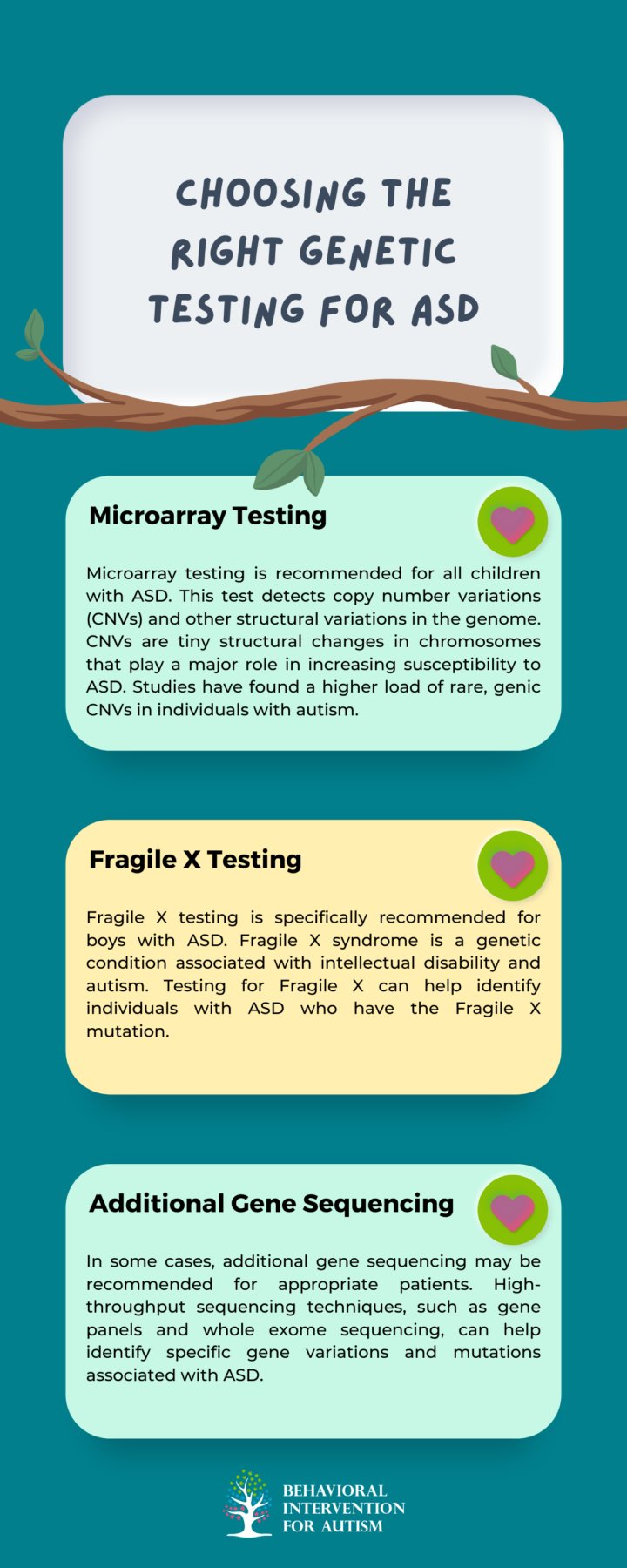
Table of Contents
To comprehend the causes of autism, it is important to explore the role of genetics in this neurodevelopmental disorder. Genetic factors play a significant role in the development of autism, as evidenced by various studies and the high heritability reported in individuals with autism.
Genetic Contribution to Autism
Since the 1970s, researchers have recognized the contribution of genes to autism. Research indicates that if one identical twin has autism, there is roughly an 80 percent likelihood that the other twin will also have it. This suggests a strong genetic component in the development of autism.
High heritability has been reported in autism spectrum disorders (ASDs), with identical twins exhibiting a concordance rate of 70-90%. This indicates that genetic factors play a substantial role in the risk of developing autism.
Twin Studies and Autism
Twin studies have been instrumental in understanding the heritability of autism. In one study that utilized a twin design to explore the etiology of ASDs and autistic traits over time, genetic factors consistently played a larger role than environmental factors. This suggests that environmental factors alone are unlikely to fully explain the increased prevalence of autism.
Identical twins, having nearly identical genetic material, show a higher rate of autism concordance compared to fraternal twins. This further supports the genetic contribution to autism.

Key Genetic Factors
Understanding the causes of autism reveals that genetics play a significant role. Although no single “autism gene” has been identified as the sole factor, researchers have pinpointed several genes strongly associated with the condition. Moreover, mutations beyond these genes also contribute to the development of autism.
Identified Autism-Linked Genes
Researchers have identified approximately 100 genes that are strongly associated with autism. These genes often play crucial roles in neuron communication or gene expression control. It’s important to note that less than 1 percent of non-syndromic cases of autism can be attributed to mutations in any single gene. This highlights the complexity of the condition and the involvement of multiple genetic factors.
- SHANK3 – Involved in function and synapse formation
- CHD8 – Regulates gene expression and brain development
- PTEN – Regulates cell growth and neuronal signaling
- NRXN1 – Involved in synaptic signaling and neuronal development
- FMR1 – Associated with Fragile X syndrome, a genetic condition often accompanied by autism-like symptoms
These are just a few examples of the genes that have been strongly linked to autism. Further research is needed to fully understand the role of each gene and how their interactions contribute to the development of autism.
Mutations Beyond Genes
While genes make up less than 2 percent of the genome, mutations contributing to autism have also been discovered in noncoding DNA regions that regulate gene expression. Researchers are exploring the remaining 98 percent of the genome to identify irregularities associated with autism. This includes mutations in noncoding DNA regions, as well as structural chromosomal deletions or duplications that can be detected using chromosomal microarrays.
This broader exploration of the genome beyond genes is crucial for gaining a comprehensive understanding of the genetic factors involved in autism. By investigating mutations in noncoding DNA regions, researchers hope to uncover additional insights into the complex genetic landscape of autism.
Understanding the identified autism-linked genes and exploring mutations beyond genes are important steps in unraveling the genetic factors that contribute to the development of autism. While genetics play a significant role, it’s important to note that environmental factors also interact with these genetic factors, and further research is needed to fully comprehend the interplay between genetics and the environment in autism.

Gender Differences in Autism Genetics
Autism Spectrum Disorder (ASD) affects both boys and girls, but research has shown that there are some gender differences in the genetics of autism. Understanding these differences can provide valuable insights into the underlying causes of the condition.
Mutation Rates in Girls vs. Boys
Girls with autism appear to have more mutations than boys with the condition. This finding suggests that girls may require a larger genetic impact to develop autism compared to boys. It is important to note that these mutations can occur in both inherited genes and de novo mutations.
In some cases, boys with autism can inherit mutations from their unaffected mothers. This phenomenon has led researchers to explore the possibility of certain genetic variants being more prevalent in mothers of children with autism. However, it is crucial to remember that not all cases of autism can be attributed to inherited mutations, as de novo mutations can also play a significant role.
Inheritance Patterns in Autism
Certain genetic syndromes, such as Fragile X syndrome, Rett syndrome, and tuberous sclerosis, have been associated with an increased risk of autism. Additionally, mutations in specific genes, such as the PTEN gene, as well as structural chromosomal deletions or duplications, can contribute to the development of autism.
Understanding the gender differences in autism genetics is an ongoing area of research. By studying these differences, researchers aim to gain a more comprehensive understanding of the genetic factors involved in autism and potentially develop more targeted interventions and treatments.

Genetic Testing for Autism
Genetic testing plays an important role in understanding the genetic causes of autism and can provide valuable insights for individuals with Autism Spectrum Disorder (ASD). By identifying specific genetic variations and mutations associated with autism, genetic testing can help in diagnosis, treatment, and providing individuals and their families with a better understanding of the condition.
Importance of Genetic Testing
Genetic testing is recommended for individuals with ASD, as genetic syndromes are associated with the condition. Although hundreds of genes have been identified as contributors to ASD, they only account for 10-20% of cases. It is important to note that individuals with similar genetic variants may exhibit varying levels of symptoms on the autism spectrum.
Genetic testing provides individuals with ASD and their families with valuable insights into the genetic factors influencing the condition. It can identify specific gene variations, copy number variations (CNVs), and other genetic abnormalities linked to ASD. With this information, families can make informed decisions about treatment options, therapies, and support services.
Recommended Testing Methods
Various genetic testing methods are available for individuals with ASD, and the choice of testing depends on several factors. Guidelines suggest the following testing methods:

It’s important to consult with a healthcare professional or genetic counselor to determine the most appropriate genetic testing method based on individual circumstances. These experts can provide guidance, interpret the test results, and help individuals and their families understand the implications of the genetic findings.
Genetic testing for autism is an evolving field, and ongoing research continues to shed light on the genetic factors contributing to ASD. By leveraging the power of genetic testing, we can further our understanding of autism and pave the way for personalized approaches to diagnosis, treatment, and support for individuals with ASD and their families.
Ongoing Genetic Research
As our understanding of autism genetics continues to evolve, ongoing research plays a vital role in unraveling the complex causes of autism. Scientists are actively engaged in various studies and investigations to further our knowledge in this field. We’ll delve into two key aspects of current genetic research: genome-wide studies and the future directions for further exploration.
Genome-Wide Studies
Genome-wide studies have been instrumental in shedding light on the genetic underpinnings of autism. These studies involve analyzing the entire genome, examining thousands of genetic markers, and comparing individuals with autism to those without the condition. Through these studies, researchers have made significant discoveries.
A large-scale study published in 2019, which involved over 18,000 autistic individuals and 27,000 non-autistic individuals, identified 12 regions of the genome containing common variants linked to autism. A subsequent re-analysis in 2020 revealed two additional regions and included an additional 6,000 samples. These findings contribute to our understanding of the genetic factors associated with autism.
Additionally, genome-wide association studies (GWASs) have identified more than 100 loci associated with Autism Spectrum Disorder (ASD). These loci represent specific regions of the genome that are statistically linked to the development of ASD. Continued GWAS analyses hold the potential for further discoveries, potentially leading to the identification of novel ASD risk genes.
Future Directions in Research
The future of genetic research in autism holds great promise. Advances in technology and research methodologies are opening up new avenues for exploration. Here are some key areas that researchers are focusing on:
- Multigenic and Heterogeneous Etiology: High throughput sequencing in the early 2000s revolutionized genetic research by revealing that the etiology of ASD is multigenic and highly heterogeneous. While only a few ASD-related diseases have monogenic causes, large-scale genetic studies have identified hundreds of risk genes. Many of these genes are involved in transcriptional regulation pathways and synapse formation.
- Somatic Mosaicism: Somatic mosaicism, caused by DNA mutations occurring after fertilization, is becoming increasingly important in understanding various neurodevelopmental disorders, including autism. Studies estimate that roughly 5-7% of de novo pathogenic variations are postzygotic, with somatic mosaicism accounting for approximately 3-5% of simplex ASD cases. Understanding the role of somatic mosaicism could provide valuable insights into the development of autism.
- Copy Number Variations (CNVs): Copy number variations are tiny structural changes in chromosomes that play a major role in increasing susceptibility to ASD. Research has shown a higher load of rare, genic CNVs in individuals with autism. Estimates suggest that CNVs directly cause around 10% of ASD cases. Further exploration of CNVs and their impact on autism will enhance our understanding of the genetic landscape of the condition.
Through ongoing genetic research, scientists aim to uncover additional genetic factors, refine genetic testing methods, and ultimately pave the way for improved diagnostics, personalized treatments, and interventions for individuals with autism. The collaborative efforts of researchers worldwide are driving us closer to a comprehensive understanding of the genetic causes of autism.
Here at Behavioral Intervention for Autism, we are committed to providing top-notch ABA therapy in Florida, tailored to each individual’s needs. Our dedicated team offers exceptional care and innovative approaches to support your journey.
For more information on how we can help, contact us today.
- 9 Common Obsessions of Children With Autism You Should Know - February 25, 2025
- What is Neurodiversity? A Guide to Embracing Differences - February 25, 2025
- Understanding Hyperfocus in Autism: What It Means and Why It Happens - February 25, 2025
